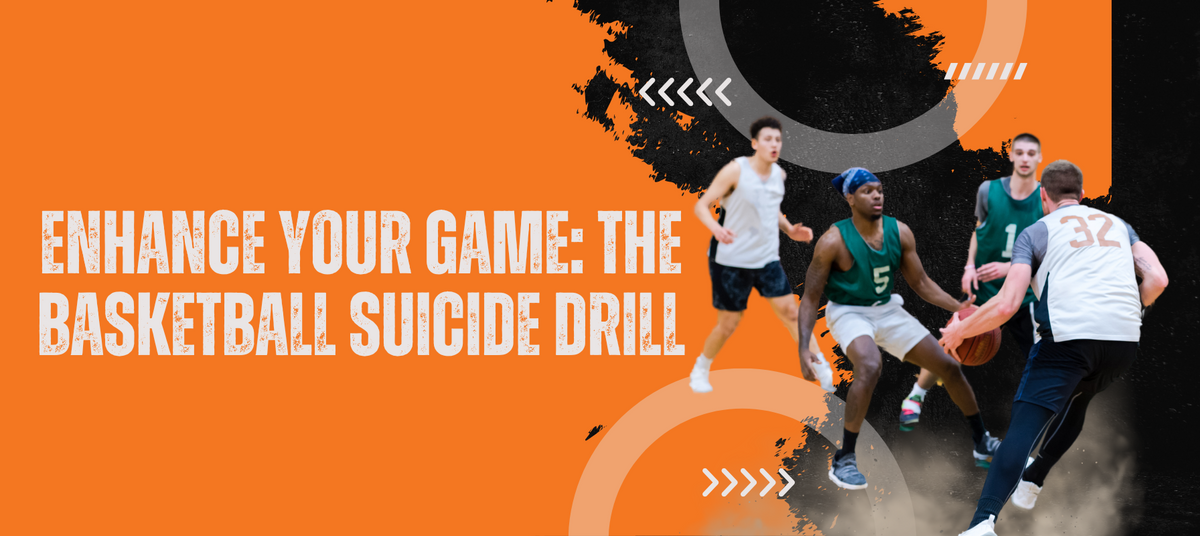
Enhance Your Game: The Basketball Suicide Drill
|
|
Time to read 4 min
|
|
Time to read 4 min
As a parent of a young basketball player, you’ve likely heard of the basketball suicide drill. This conditioning exercise is common in basketball practices. But is it effective, and importantly, is it safe? Let’s explore the benefits, drawbacks, and alternatives to this sometimes controversial drill. This article provides a comprehensive understanding of the basketball suicide drill.
The basketball suicide drill involves sprinting to progressively further lines on the court and back. Players start at the baseline, sprint to the free-throw line and back, then to half-court and back, the opposite free-throw line and back, and finally the opposite baseline and back.
This drill tests speed, agility, and endurance, mimicking the quick bursts of energy needed in a game. Coaches often use it for conditioning but sometimes as a consequence for mistakes.
This drill improves cardiovascular fitness. Repeated sprints challenge the respiratory system, building stamina. The full-court sprints help athletes maintain energy for transitions and fast breaks. The basketball suicide drill increases speed and agility by emphasizing quick turns and direction changes. This can help improve a player's free throw percentage as well.
A primary concern is the risk of injury, especially overuse injuries from repetitive sprinting without a proper warm-up. This can strain muscles and joints. Another issue is the name “suicide,” which carries a negative connotation.
The Positive Coaching Alliance explains how “suicides” can be harmful and recommends against using it.
The drill might not be developmentally appropriate for young children. Experts suggest high-intensity, full-court drills as better alternatives. These drills develop skills and fitness while keeping children engaged and learning ball handling.
Basketball offers many ways to improve fitness without using the basketball suicide drill. High-intensity drills using battle ropes improve cardio and work major muscle groups.
Agility ladder drills enhance footwork. Many full-court exercises promote conditioning and court sense in dynamic play-based situations.
These exercises help children learn without overuse and stress. Traditional running drills like suicides can place strain on the muscles, joints, and cardio-pulmonary system.
The drill can be modified. Shorter sprints, fewer repetitions, and longer rest periods make it less intense for youth players.
Combining the basketball suicide drill into scrimmages and practices, rather than isolated running, is also recommended.
Parents of young children not yet involved in intense competition should talk with coaches about expectations at advanced levels. Understanding what's involved in activities like basketball suicide drills can help parents decide if the intensity is appropriate. Approach coaches respectfully when discussing your concerns.
A good way to begin the conversation is by acknowledging your limited experience and expressing interest in learning more about the emotional components of advanced competition.
Start at the baseline. Run to each line (free throw, half-court, opposite free throw, opposite baseline), touching each line and returning to the baseline before sprinting to the next line. Make sure to touch each line.
The drill develops cardio, physical fitness, and court awareness. It may boost confidence in young players as they learn court boundaries. The drill may help players focus when making free throws.
Some coaches may use it for practice mistakes. However, it primarily serves as conditioning to improve on-court endurance in basketball and other sports like cross country, track and field, and field hockey.
The basketball suicide drill can be valuable for conditioning, particularly when combined with strength training, such as barbell military presses and other exercises. Coaches and parents should prioritize player safety and consider the negative connotations of the name. Incorporating various fitness and cardio activities with ball handling drills in youth basketball helps players develop confidence.
This preparation allows them to eventually benefit from the basketball suicide drill safely. Discuss the drill’s benefits and risks, as well as other conditioning workouts, fitness, rest, and their impact with your child's coach, online resources, or medical experts. Always ensure age appropriateness.
Suicide Drill Basketball. Suicide Drill Basketball. Suicide Drill Basketball. Suicide Drill Basketball. Suicide Drill Basketball. Suicide Drill Basketball. Suicide Drill Basketball. Suicide Drill Basketball. Suicide Drill Basketball. Suicide Drill Basketball. Suicide Drill Basketball. Suicide Drill Basketball. Suicide Drill Basketball. Suicide Drill Basketball. Suicide Drill Basketball. Suicide Drill Basketball. Suicide Drill Basketball. Suicide Drill Basketball.Suicide Drill Basketball.Suicide Drill Basketball. Suicide Drill Basketball. Suicide Drill Basketball. Suicide Drill Basketball.Suicide Drill Basketball.Suicide Drill Basketball.
Enhance Your Game: The Basketball Suicide Drill.
As a parent of a young basketball player, you’ve likely heard of the basketball suicide drill. This conditioning exercise is common in basketball practices. But is it effective, and importantly, is it safe? Let’s explore the benefits, drawbacks, and alternatives to this sometimes controversial drill. This article provides a comprehensive understanding of the basketball suicide drill.
The basketball suicide drill can be valuable for conditioning, particularly when combined with strength training, such as barbell military presses and other exercises. Coaches and parents should prioritize player safety and consider the negative connotations of the name. Incorporating various fitness and cardio activities with ball handling drills in youth basketball helps players develop confidence.
This preparation allows them to eventually benefit from the basketball suicide drill safely. Discuss the drill’s benefits and risks, as well as other conditioning workouts, fitness, rest, and their impact with your child's coach, online resources, or medical experts. Always ensure age appropriateness.
Enhance Your Game: The Basketball Suicide Drill. Enhance Your Game: The Basketball Suicide Drill.
This site requires cookies in order to provide all of its functionality.
